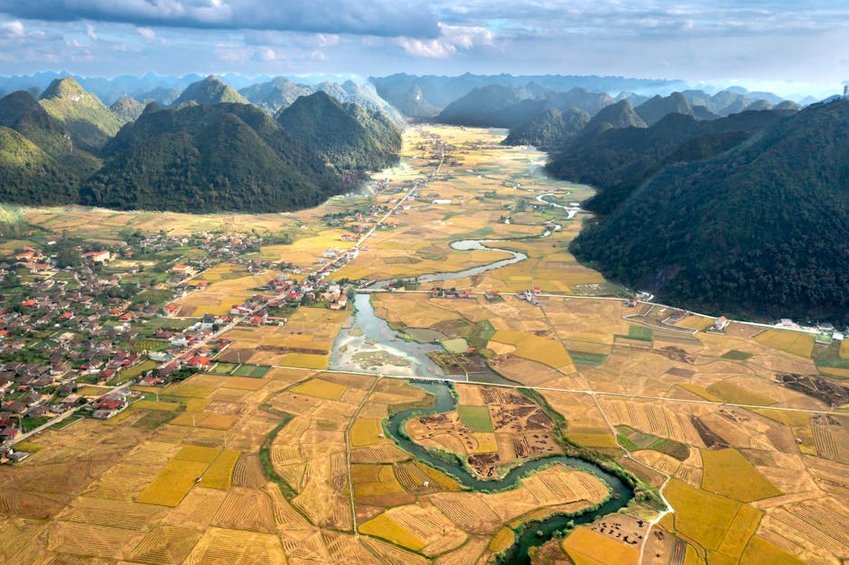Cuba Viñales Valley Tobacco Farms: Authentic Cultural Immersion
Exploring Cuba Viñales Valley tobacco farms immerses you in centuries-old agricultural traditions set against stunning limestone mogotes. This UNESCO World Heritage site preserves unique farming methods where families have cultivated tobacco for generations using techniques passed down through oral history. Your visit supports sustainable tourism while offering intimate access to cigar production from seed to finished product across small-scale plantations.
The valley’s microclimate creates ideal conditions for growing some of the world’s finest tobacco leaves with distinct flavor profiles. You’ll witness the entire cultivation process while learning about Cuban agricultural heritage from farmers themselves. This experience combines natural beauty with cultural authenticity through hands-on activities and personal interactions.
Viñales Valley Essential Information
Viñales Valley sits in Pinar del Río Province approximately 180 kilometers west of Havana. The region features dramatic karst landscapes called mogotes that rise abruptly from the fertile valley floor. These geological formations create a unique ecosystem protected as a National Monument since 1979.
The valley’s agricultural significance stems from its rich red soil perfect for tobacco cultivation. Farmers here maintain traditional methods without modern machinery or chemicals. This preservation of heritage earned UNESCO designation in 1999 recognizing both natural and cultural value.
Tobacco farming follows seasonal cycles with planting beginning in October and harvest occurring from January through March. The dry season from November to April offers optimal visiting conditions with minimal rainfall. Temperatures range from 68°F to 82°F (20°C to 28°C) during these months.
What You Need to Know Before Visiting
Prepare for your agricultural tourism experience with these essential details about the region.
- Viñales operates on Cuban Standard Time (UTC-5) with most farms welcoming visitors between 9 AM and 5 PM daily except during planting and harvest intensive periods.
- The Cuban Convertible Peso (CUC) serves as primary tourist currency though some farms accept euros at approximately 1 CUC to 0.85 EUR exchange rate for direct purchases.
- Basic Spanish phrases greatly enhance interactions since farm families typically speak limited English despite regular visitor contact.
- Budget travelers spend 40-60 USD daily covering casa particular accommodation, farm tour fees, local meals and shared transportation with visits to 2-3 plantations including demonstration sessions.
- Mid-range visitors allocate 80-120 USD daily for private rooms with en-suite bathrooms, guided agricultural tours with translation, restaurant dining and taxi transfers between distant farms.
- Luxury experiences cost 150-200 USD daily featuring premium casas with pools, private tobacco experts, customized itineraries and vintage car transportation with photography guidance included.
- Cuba Travel Guide
- Lonely Planet Cuba
Historical Context and Significance
Tobacco cultivation in Viñales dates to the early 18th century when Spanish colonists recognized the valley’s ideal growing conditions. The unique terroir combines specific soil composition with consistent humidity levels that produce tobacco with lower nicotine content than other regions. This history creates a living museum of agricultural practices.
Traditional drying houses called casas de tabaco dot the landscape featuring palm-thatched roofs and wooden slat walls. These structures allow optimal air circulation for curing leaves naturally over 45-50 days. The methods remain virtually unchanged since their introduction centuries ago.
Sustainable Tourism Practices
Viñales developed community-based tourism initiatives that directly benefit local families through homestays and farm visits. These programs ensure economic sustainability while preserving cultural heritage against commercial pressures. Your participation supports this delicate balance between tourism and tradition.
Most farms operate as cooperatives where multiple families share resources and knowledge. This collective approach maintains quality standards while distributing economic benefits throughout the community. Visitors contribute to this system through guided tours and purchases.

Alt: “vinales-valley-tobacco-farms-mogotes-landscape”
Cuba Viñales Valley Tobacco Farms – Planning Your Trip
Organizing your Cuba Viñales Valley tobacco farms experience requires understanding seasonal patterns and logistical considerations. The prime visiting window falls between December and February when tobacco plants reach maturity and drying houses fill with aromatic leaves. This period coincides with pleasant weather conditions averaging 72°F (22°C) with low humidity levels.
You’ll need approximately three full days to properly experience multiple farms and understand the complete production process. Schedule morning visits when farmers demonstrate cigar rolling techniques before afternoon heat intensifies. Evenings offer opportunities to enjoy traditional music in Viñales village after farm activities conclude.
Booking accommodations three months in advance secures preferred casas particulares near central tobacco plantations. These private homestays provide authentic immersion with breakfast typically included for 15-25 CUC nightly. Confirm reservations directly with hosts since online platforms sometimes show inaccurate availability.
Best Time to Visit Viñales Valley
Visit between late December and early March for optimal tobacco farming activities and photographic conditions. January features the harvest peak with fields bustling with activity and drying houses at maximum capacity. Daytime temperatures range from 65°F to 78°F (18°C to 26°C) with cooler evenings around 60°F (16°C).
Shoulder seasons in November and April offer fewer crowds though some farming activities may be limited. The rainy season from May to October presents challenges with frequent afternoon storms and high humidity levels exceeding 80%. However, landscape photography during this period captures vibrant green vegetation against dramatic cloud formations.
Budget Planning and Costs
Manage expenses effectively with this tiered budget approach for your tobacco farm exploration.
Essential Preparation Checklist
Pack lightweight breathable clothing in neutral colors that protect against sun exposure during field walks. Include sturdy closed-toe shoes for uneven terrain and a wide-brimmed hat for extended outdoor periods. Rain gear proves essential even in dry season due to occasional showers.
Bring sufficient cash in convertible currency since credit cards from US banks face restrictions and ATMs remain unreliable in rural areas. Obtain comprehensive travel insurance covering medical evacuation and document your itinerary with emergency contacts. Learn basic Spanish phrases for farm interactions.
Top Attractions and Activities
Viñales offers diverse experiences beyond tobacco farming that showcase the region’s natural and cultural wealth. The valley’s unique geology provides opportunities for hiking, climbing and cave exploration amid spectacular scenery. These activities complement agricultural tourism for a well-rounded visit.
Local guides lead excursions to prehistoric mural sites and underground river systems within the mogotes. The community maintains strong artistic traditions visible in handicraft markets and musical performances each evening. Balance plantation visits with these cultural elements for complete immersion.
Must-See Highlights
Finca Agroecologica El Paraiso represents model sustainable farming with organic practices and spectacular valley views. This family-operated demonstration farm explains integrated agriculture beyond tobacco alone. Visit around midday for their famous farm-to-table lunch featuring 15-20 traditional dishes.
Cueva del Indio showcases impressive cave systems with boat rides along underground rivers discovered in 1920. The site features Taino Indian pictographs and unique rock formations illuminated for visitor access. Combine this with nearby tobacco plantations for contrasting experiences within short distance.
Los Jazmines lookout provides panoramic valley vistas particularly stunning at sunrise and sunset. This viewpoint captures the iconic mogotes landscape that defines the region’s visual identity. Photography enthusiasts find optimal conditions during early morning hours with minimal haze.
Hidden Gems and Local Favorites
Palmarito offers authentic farming experiences away from main tourist routes with personalized attention from multi-generational families. This community maintains traditional oxen-plowing methods and welcomes visitors into their homes for coffee. Reach this area via bicycle rental from Viñales village.
Casa del Veguero presents comprehensive tobacco education through interactive displays and hands-on rolling sessions. This museum-style farm explains the entire production process from seed selection to cigar branding. The owners share generational knowledge through detailed demonstrations.
Tobacco Farm Experiences
Participate in seasonal activities like leaf selection and sorting during harvest months from January to March. Farmers demonstrate proper techniques for identifying prime leaves based on color, texture and size. This hands-on involvement creates deeper appreciation for the craft.
Learn cigar rolling from master torcedores who shape finished products using traditional methods. These sessions typically last 45-60 minutes with opportunities to purchase personally rolled cigars. The experience includes proper cutting and lighting techniques for optimal enjoyment.
Practical Travel Information
Reaching Viñales involves multiple transportation options from Havana with varying comfort levels and costs. Viazul buses provide reliable service three times daily with journey duration of 3-4 hours depending on road conditions. Tickets cost approximately 12-15 USD when booked in advance.
Private taxis offer flexibility for 60-80 USD one-way with capacity for four passengers and luggage. This option allows stops at interesting locations along the route including Soroa orchid gardens. Shared taxis reduce costs to 20-25 USD per person with similar travel time.
Rental cars provide independence though Cuban roads present challenges with signage and conditions. Available through international agencies in Havana starting at 45-60 USD daily including basic insurance. Navigation apps work intermittently so physical maps remain essential.
| Accommodation Type | Features and Amenities | Price Range (USD) |
|---|---|---|
| Budget Casa Particular | Private room with shared bathroom, breakfast included, family atmosphere | $15-25 |
| Mid-Range Casa | En-suite bathroom, air conditioning, terrace access, dinner available | $30-50 |
| Luxury Villa | Private pool, dedicated host, guided farm access, transportation arranged | $80-120 |
| Hotel Options | Restaurant on-site, swimming pool, tour desk, international standards | $60-100 |


